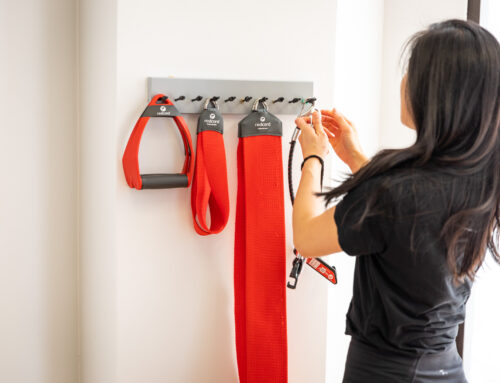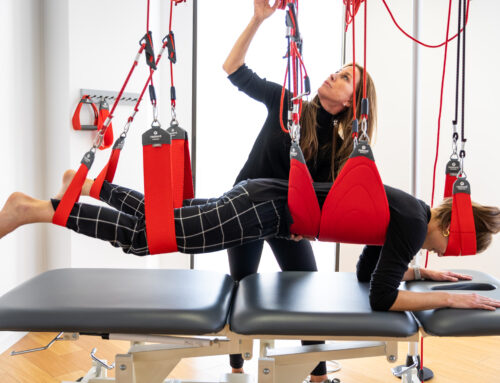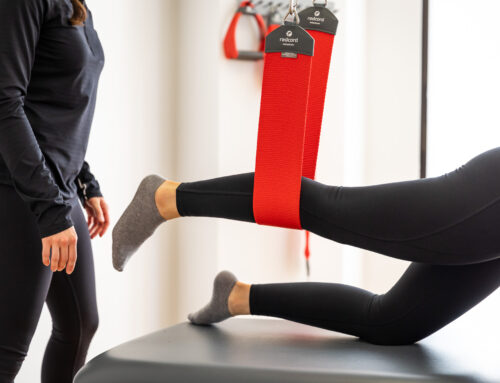During resistance training protocols, people are often encouraged to target the scapular stabilizing musculature (middle and lower trapezius and serratus anterior) while minimizing shoulder prime mover activation (upper trapezius and large glenohumeral muscles) in their training regime, especially in overhead athletes with scapular dyskinesis. In order to increase the activation levels in the stabilizing muscles without drastically increasing the activation in the prime movers, unstable surfaces are frequently used during closed kinetic chain exercises (CKC). However, the specific influence of Redcord slings (RS) as an unstable surface tool on the shoulder muscle activation levels have rarely been investigated, despite these results may be used for adequate exercise selection.
Therefore, a controlled laboratory study was performed on 47 healthy subjects (22 ± 4.31 yr; 176 ± 0.083 cm; 69± 8.57 kg) during four CKC exercises without and with RS: half push-up, knee push-up, knee prone bridging plus, and pull-up. When using RS, serratus anterior muscle activation decreased during the knee push-up and knee prone bridging plus exercise. In addition, a drastic increase in pectoralis major muscle activation was found during the half push-up and knee prone bridging plus exercise.
Consequently, the use of RS does not necessarily imply that higher levels of scapular stabilizermuscle activation will be attained. These findings suggest RS might be an appropriate training tool when used within a general strengthening program, but should not be preferred over a stable base of support when training for specific scapular stabilization purposes.
Keywords: shoulder; sling exercises; sEMG





